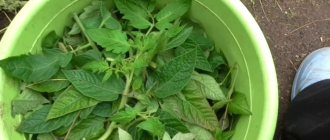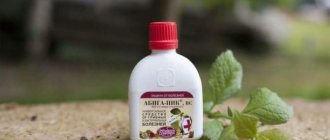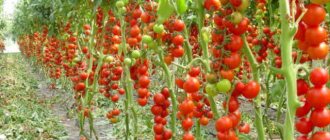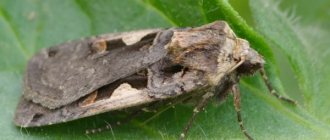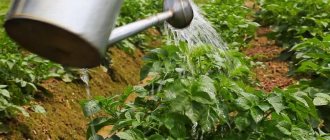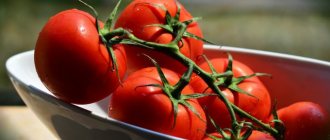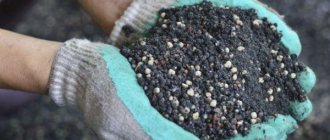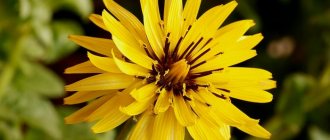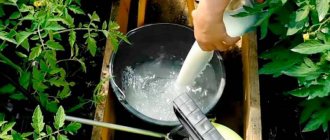Home Tips for summer residents
To ensure that tomatoes during the growing season do not waste their energy on feeding excess greenery, but rather form juicy fruits, the lower branches and shoots are removed from the bushes. After this treatment, many shoots remain. And they can be a valuable raw material for experienced gardeners.
- 2 Additive to compost
- 3 As mulch
- 4 Pest control
- 5 As a fertilizer
- 6 Rodent protection
- 7 Neutralization of unpleasant odors
Ash
Good potassium fertilizer is obtained from cut tomato tops. To obtain ash, any raw material is used, even those damaged by diseases, fungal infections and pests.
The cut greens are dried, collected in a fireproof container and burned. The charred trunks of the plant are crushed into powder and a natural fertilizer is obtained, containing a variety of micro- and macroelements, which is mixed with wood ash.
You can use the fertilizer immediately after cooling, but it can also be stored indefinitely in a dry place. You just need to carefully protect the fertilizer from moisture so that valuable potassium is not washed out of it.
Methods for using such ash at a summer cottage are as follows:
- added to the holes before planting vegetable crops - potatoes, peppers, tomatoes, zucchini, eggplants;
- water the seedlings with infusion of ash;
- powder is sprinkled on plants during growth, and on perennial crops in preparation for frost;
- In the fall, ash is added to the soil during digging.
Tomato tops are poisonous. How to use tomato tops: 5 ways for all occasions
Where do you start preparing for the summer season? Well, as usual, with replenishing the supply of seeds. You can often see that the first thing gardeners look at is tomatoes. And this is not surprising, because the bright packaging, which depicts red, orange, yellow, and green tomatoes, makes your hand grab a pack of seeds. The most interesting thing is that the desire to buy tomatoes will not stop at one variety, you will want more and more, and you will not even notice how a whole tomato plantation has been born from the garden.
A few weeks after planting tomatoes in open soil, they grow so large that they require pruning. After each such haircut, quite a lot of stepsons remain. A little later you can add the lower leaves here. And at the end of the season, this waste will turn into a big pile of tomato bushes. Where to put so much tops?
Don't rush to throw everything away. This plant has unique properties. The tops can be used in at least five life situations, which you will now learn about.
1. Pest control. Yes, as you know, plants are threatened by many insects over a long period of time. And tomato tops will help get rid of them, because they contain solanine, a toxic compound. It is very simple to prepare a pest repellent from greens.
Pour water over the pre-shredded tops. Ten liters of liquid will be enough. Let the mixture sit for four hours. Boil for half an hour. Strain the cooled broth, dilute with water (1 to 4). Add fifty grams of soap to the infusion. With this product you need to spray the parts of the plant that are affected by the pest. Do this once every seven days.
2. Fertilizer. Tomato tops are ideal raw materials for making compost.
3. Feeding. Tomato tops can be used to prepare an infusion. This infusion can be used as plant food; it will be an excellent nitrogen fertilizer. Fill the barrel 2/3 with weeds, and add tops there, at the same time, it should make up ¼ of all the greens. Fill the container with water, cover it with film, secure it with a rope, and make holes for air. In a week the infusion will be ready.
Before you start watering the plants, dilute the fertilizer with water 1 to 10, pour it into a watering can and water the desired plants.
4. Ash. Tomato tops can be burned to produce very valuable ash. This fertilizer contains many beneficial substances for plants. I described the benefits of ash and its use in the article: Use of wood ash on a personal plot, properties and benefits
5. Mulch. Tomato tops can be used for mulching. The greens should be dried and placed between the beds, near berry bushes, and near (fruit) trees.
Dear readers, if you liked the article, like, comment, subscribe to the channel. So you will never miss the most interesting topics from my personal experience and all gardening work.
Additive to compost
Cut branches and leaves of tomatoes can be poured into a compost pit to obtain humus. The shoots are laid in layers, alternating with soil, and compacted. To stimulate the decomposition process, the mixture is watered with a solution of manure or urea.
The compost pit is dug in the shade, as the sun's rays slow down the rotting process. It is covered with perforated film or tarpaulin on top to further block out the light. Under these conditions, the compost is ready for use within a year.
But if the tops are infected with late blight or bacteria, then the optimal time for them to rot will be at least three years. During this period, dangerous microorganisms will die, and the mass will be processed into crumbly and nutritious humus. When applied to the soil, it will improve its structure and enrich the fertile layer with nutrients.
The value of green tops of vegetable crops as fertilizer
Tomato tops as fertilizer are plant organic matter. During growth, tomatoes consume a large amount of nitrogen, which accumulates in the leaves, as well as a huge amount of microelements, including calcium. All this greenery, which is simply thrown away or burned, can become food for soil microorganisms if it is correctly added to the soil.
Bacteria - lactic acid, nitrogen-fixing and many other varieties, also need food. They mainly use plant residues - roots, dry leaves, branches.
Due to the fact that colonies of microorganisms live in the soil, the top fertile layer is rich in humus. This substance consists of humic acids, which can only be obtained when vegetation passes through the digestive tract of bacteria, earthworms, and insects.
The presence of humic acids is also important for humans, since the immunity of the fruit is transferred to him. By eating vegetables and fruits grown in fertile soil, the body receives more vitamins and minerals than when using only mineral mixtures. "Mineralized" apples or potatoes may look better, but the nutritional value will suffer.
If you consider how much greenery is simply thrown away in the fall, you can judge how many nutrients that were retained by plant tissue are no longer useful. Of course, there are also disadvantages that must be taken into account.
As mulch
Tomato shoots are used to mulch the soil. Dried tops laid on the surface of the soil, between vegetables or beds, prevent the soil from drying out.
Under the shade of leaves and shoots, weed growth slows down or stops altogether. And this frees the summer resident from frequent watering, weeding and regular loosening of the soil. After rotting, the tomato tops will enrich the soil with useful microelements and compounds.
In addition, if you spread such mulch near trees and shrubs, the fragrant greenery will repel garden pests that like to nest under the roots for the winter.
To spread the tops on the ground in a denser layer, they are first crushed. And as it dries and rots, new prepared material is added. For mulching, you need to choose healthy branches so that spores and bacteria from diseased greenery do not spread throughout the entire area.
Stimulants for feeding tomatoes
Stimulants contain synthetic or natural phytohormones, which, when released into tomatoes, help to develop, bloom, and bear fruit. Plants more easily tolerate stress from replanting, temperature fluctuations, and prolonged bad weather.
Important! The results from the use of stimulants only occur if the instructions are strictly followed. This is an exact dosage and a certain number of treatments.
During flowering, tomato bushes can be sprayed with gibberellins:
- Gibbersib;
- Ovary;
- Tomaton.
The phytohormones included in these stimulants have a positive effect on flowering and fruiting. Epin helps to cope with stress. “Athlete” will regulate the growth of tomato seedlings and prevent them from stretching. “Zircon” is necessary to support immunity during outbreaks of late blight and other fungal diseases.
Conclusion:
Beautiful and juicy tomatoes are the pride of a gardener. Depending on the region and purpose, varieties are selected. Every gardener focuses on crop yield. For a full harvest, you need: good lighting, fresh air, warm temperatures and timely fertilizing. Tomatoes have high nutritional needs; proper fertilizer and feeding allow you to get a high yield of good quality. Improper fertilization of tomatoes or complete abandonment of this procedure affects the quality of the fruit and reduces yield. It is important to know when, what to feed tomatoes and how. When is the autumn application of organic matter sufficient, and when is special fertilizing or the application of complex mineral fertilizers for tomatoes needed? Folk remedies are widely used by experienced gardeners, they allow you to get a good harvest and save on fertilizers.
0
Pest extermination
All green parts of tomatoes contain a toxic substance - solanine. When eating leaves sprayed with a composition containing this toxic compound, insect pests die. Therefore, an infusion of tops is used to combat aphids, Colorado potato beetles, ants, spider mites and caterpillars.
To prepare the solution, take a kilogram of tomato leaves and stems per bucket of water. Leave for 8-10 hours. Finally, soap shavings or liquid soap are added, filtered and sprayed on the plantings. Plants are treated every 6-7 days throughout the season, except for the flowering period.
To obtain the infusion, both fresh tops and dry raw materials are used. You should be careful when spraying plants that have fruits, as an overly concentrated solution can harm them. To prepare the composition, only tops without visible signs of fungal diseases are used.
Advantages and disadvantages
The disadvantages of this feeding are that many plants get sick during growth and fruiting. Fungal diseases are especially dangerous, which can affect the entire plantation of tomatoes, potatoes or cucumbers in a week. If the owner of the site carefully monitors the greenery, sprays or burns diseased plants in a timely manner, then there is nothing to fear.
But if you do not take the fungus seriously, you can end up with contaminated fertilizer, after which you will have to destroy all crops and fruits. The fact is that with low immunity, the fungus can cause a lot of trouble to humans, so it’s better not to risk your health.
The advantage of plant organic matter is that it can be used in many ways, including safe ones, such as making compost. It takes longer, but during composting, all pathogenic microorganisms die and fertilizer from tomato tops becomes absolutely safe.
Liquid fertilizing is done quickly and can eliminate nutrient deficiencies in a short time. At the same time, almost all the microelements that the plant has accumulated for its needs pass into the water.
The cost of such fertilizer is the lowest of all known. It only takes time to properly put the raw materials into a compost heap for rotting or prepare a liquid fertilizer.
As a fertilizer
The herbal infusion is prepared much faster than humus, and in terms of the content of useful microelements it is not inferior to it. Any mowed vegetation from the site is suitable for preparing this fertilizer, and the added tops make the solution more nutritious. But to prevent such fertilizer from turning into poison, the content of tomato leaves and stems should not exceed a quarter of the total herbal mass.
The container in which the infusion is prepared is filled three-quarters of the volume with the green mixture. Pour water up to the edges of the barrel, mix and cover with a lid or wrap with film. Allow the solution to brew for at least 7 days.
The mixture has a specific putrid smell, so it is better to keep the barrel with the infusion away from the house and recreation area. A liter of the finished concentrate is stirred in a bucket of water and watered directly to the roots of garden plants.
Types of tomato fertilizers
There are two types of fertilizing. Root and foliar.
Most gardeners use root feeding. It nourishes plants through the root system, that is, it is watering a nutritious mineral or organic solution under the root.
Foliar application is when we apply the same nutrient solution directly to the leaves of plants. This type of feeding tomatoes with mineral or organic fertilizers has a number of advantages. Firstly, it allows you to save fertilizer. Because when we apply them to plants, a significant part of the nutrients is washed away with watering; during rain, not all nutrients reach the plant.
Both root and foliar feeding are equally useful, both for tomatoes that grow in open ground and for greenhouses. In the first half of the growing season, it is better to alternate the plants. In the second, move on to root feeding. At high humidity, the greenhouse should be ventilated more often, especially after spraying. In order for the plant to get the maximum benefit from any feeding, you need to know when - in the morning, during the day, in the evening - it is best to apply them.
Neutralization of unpleasant odors
Cut tomato greens are a natural neutralizer of unpleasant odors. When you add tops to your garden toilet weekly, its smell becomes less noticeable, and annoying insects disappear - the leaves and stems of the tomato absorb ammonia and flavor the air.
Summer residents will not have to buy special chemicals and deodorants. This method will lead to significant savings in money and will not harm the environment.
- Author: Inna Kiseleva
Rate this article:
- 5
- 4
- 3
- 2
- 1
(12 votes, average: 4.3 out of 5)
Share with your friends!
How to make compost from tops
Composting is a method of preserving nutrients that involves aerobic microorganisms. First you need to build a composter with your own hands or buy a ready-made one. In large areas, two or even three-section compost heaps are made, since the amount of waste cannot fit into one.
The fact is that the pile must have strict proportions: 1 meter wide, 1.5 m high. Length doesn't matter. This is done because air must penetrate evenly inside, otherwise microorganisms will die without oxygen, and the raw materials will begin to rot.
In order for the combustion process to begin in compost, it is necessary to maintain the proportions of the components. Nitrogen-containing substances, which include tops, should be 4 times less than carbon-containing substances. Therefore, for every 10 cm of greenery or manure there should be 40 cm of straw, hay, peat, humus, dry leaves or toilet paper.
On average, without human intervention, a compost heap matures in about 1 – 1.5 years. To speed up the process, summer residents shovel the pile once a week so that more oxygen gets inside. In this case, bacteria multiply faster and process organic matter. When laying, you can spill each layer with a biological solution and speed up the proliferation of microorganisms.
When composting, fungal spores die from exposure to high temperature: in properly formed compost it rises to 70 degrees.
If contaminated tops are included in the compost, it must be kept for at least 3 years before being used in the garden. During this time, the infection dies.
Features of fertilizers used for greenhouse tomatoes
The first thing you need to understand when growing tomatoes in a greenhouse and greenhouses is moderate humidity . Young bushes shed their ovaries due to overwatering.
Attention! Tomatoes do not like dampness. The permissible air humidity in closed ground is no more than 47-50%. Daily ventilation is mandatory.
In addition to this primary rule, experienced gardeners additionally use simple and inexpensive preparations for the formation and preservation of the ovary:
- Ripener , 5 g – stimulant-accelerator of ripening of green fruits of vegetable plants.
- Bud , packaged 2 or 10 g – natural growth stimulator of tomato, eggplant and pepper seedlings, anti-stress drug.
- Ovary , 2 g – a means for the formation of the ovary, strengthens phytoimmunity, protects seedlings from fungal and bacterial infections.
To prevent the proliferation of phytopathogens, the soil in the greenhouse and greenhouse before planting seedlings is treated with Trichodermin or Fitosporin. Fungicides are also applied during autumn or spring digging.
To protect against garden pests, Metarizin and Actofit are added.
Attention! Seedlings in a greenhouse will be protected from nematodes by tincture or marigold mulch.
TOMATO TOPS FOR BETWEEN ROWS AND Trunk CIRCLES
It happens that after pinching numerous tomato bushes, I don’t have time for further manipulations with the tops. Then I turn it into mulch and simply lay it out between the rows of other vegetables. By weekly updating the layer of “tomato” mulch on the beds, I save myself from the tedious task of weeding the rows and reduce the number of waterings. If I find infected plants on a tomato plantation, I cut off all the damaged leaves from them and take them to the garden - I mulch the tree trunks of shrubs or young seedlings with them. After rotting, tomato tops increase soil fertility and reduce the amount of fertilizer applied.
Insect repellent
Properly prepared infusions and decoctions from tomato tops help cope with a number of diseases of garden plants. The described raw materials are also used as a means to combat annoying pests. The reason is the content of solanine (a poisonous glycoside) in tomato stems. This element has a unique insecticidal effect, although not as pronounced as that of chemical fungicides.
Infusions from the indicated raw materials can not only repel, but also permanently rid the treated area of a whole list of pests:
- Colorado potato beetle;
- common aphid;
- leaf-eating caterpillar;
- spider mite;
- sawfly;
- bedbugs;
- carrot fly.
To prepare the product, pour 1 kg of chopped tomato shoots into 2.5 liters of warm water. When the components have steeped for 4-5 hours, move them to the fire and simmer under the lid for 30-40 minutes. Strain the cooled broth, dilute with water (1:4), add 55 g of any soap and mix well. The resulting mixture should be sprayed on crops affected by the types of pests listed above. Another folk remedy will help cope with their other varieties - a mixture of copper sulfate and urea.
For greater effectiveness, treatment should be repeated several times with an interval of 5-7 days. It’s better to immediately stock up on tomato shoots for future use so that you can use the stock to prepare a decoction as needed. True, the recipe for a homemade insecticide in this case will be slightly different: 10 liters of water, 1 kg of dry tops. Let the ingredients sit for 6 hours, boil in a large container for 3 hours, periodically adding liquid as it evaporates. We dilute the cooled mixture with water (1:3), combine it with soap (necessary for the product to stick to the affected area) and use it to spray plants.
If everything is done correctly, a decoction of tomato tops will not only be an excellent weapon in the fight against pests, but will also increase the productivity of the area. By the way, if immediately after preparation you place the resulting mixture in a glass container and put it in the cold, it can be used for about 6 subsequent months.
